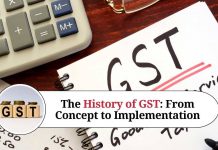Introduction:
India is the world’s largest diamond cutting and polishing hub, with an estimated 90% of the world’s rough diamonds passing through its diamond industry. The diamond industry contributes significantly to India’s foreign exchange earnings and provides employment to millions of people. However, the taxation of diamonds has been a contentious issue for decades, with numerous taxes applied at various stages of the diamond supply chain. This article explores the impact of the Goods and Services Tax (GST) on diamonds in India.
What is GST?
The Goods and Services Tax (GST) is an indirect tax that was implemented in India on July 1, 2017. The GST subsumed all previous indirect taxes and created a unified tax regime across India. The GST is levied at every stage of the supply chain, from the manufacture of goods to their final sale, and is designed to eliminate the cascading effect of multiple taxes.
GST on Diamonds:
Diamonds are taxed under the GST system at a rate of 3%. This rate is applicable to both rough and polished diamonds, and it replaces the multiple taxes that were previously levied on diamonds, such as excise duty, value-added tax (VAT), and central sales tax.
Impact on the Diamond Industry:
The GST has had a significant impact on the diamond industry in India. The introduction of a unified tax regime has made it easier for businesses to comply with tax regulations and reduced the compliance burden on small and medium-sized enterprises. The GST has also eliminated the cascading effect of multiple taxes, which has helped reduce the overall tax burden on businesses.
However, the GST has also led to a slight increase in the cost of diamonds, as the 3% tax rate is higher than some of the previous taxes that were levied on diamonds. This increase in cost has been offset by the elimination of other taxes and the simplification of the tax system.
GST has also brought transparency to the diamond supply chain, which was previously largely unorganized. The new tax system requires businesses to maintain proper records and file regular returns, which has helped reduce the scope of tax evasion and fraud.
Another significant impact of the GST on the diamond industry is the reduction in transportation time and costs. Under the previous tax system, diamonds had to pass through multiple state borders, each with their own tax system, which resulted in significant delays and increased costs. The implementation of the GST has eliminated this issue, as the tax is now applied uniformly across the country, resulting in faster transportation and reduced costs.
Moreover, the GST has made it easier for businesses to conduct inter-state transactions. Under the previous tax system, businesses were required to obtain various permits and pay multiple taxes for inter-state transactions, which was a significant burden. With the implementation of the GST, businesses can now carry out inter-state transactions without the need for additional permits, which has facilitated growth and expansion of the diamond industry.
Conclusion
In conclusion, the GST has been a game-changer for the diamond industry in India. The implementation of a unified tax regime has brought transparency, reduced the compliance burden on businesses, and simplified the tax system. While there may have been some initial challenges with the implementation of the GST, its benefits have far outweighed any drawbacks. As the diamond industry continues to grow and evolve, the GST will play an essential role in facilitating its expansion and development.
Read more useful content:
Frequently Asked Questions (FAQs)
Q: What is the GST rate on diamonds in India?
A: The GST rate on diamonds, both rough and polished, is 3%.
Q: What taxes did the GST replace for the diamond industry?
A: The GST replaced multiple taxes such as excise duty, value-added tax (VAT), and central sales tax, which were previously levied on diamonds.
Q: How has the GST impacted the diamond industry in India?
A: The GST has brought transparency, reduced the compliance burden, and simplified the tax system for the diamond industry in India. It has also led to a reduction in transportation time and costs and facilitated inter-state transactions.
Q: Has the GST increased the cost of diamonds in India?
A: The introduction of the GST has led to a slight increase in the cost of diamonds, as the 3% tax rate is higher than some of the previous taxes that were levied on diamonds. However, the benefits of the GST far outweigh any minor drawbacks.
Q: What are the benefits of the GST for the diamond industry in India?
A: The benefits of the GST for the diamond industry in India include transparency, reduced compliance burden, simplification of the tax system, faster transportation, and reduced costs. It has also facilitated inter-state transactions and helped reduce tax evasion and fraud.
Q: How has the GST impacted the diamond supply chain in India?
A: The GST has brought transparency to the diamond supply chain in India, which was previously largely unorganized. It has also simplified the tax system, reduced the compliance burden on businesses, and eliminated the cascading effect of multiple taxes.




















